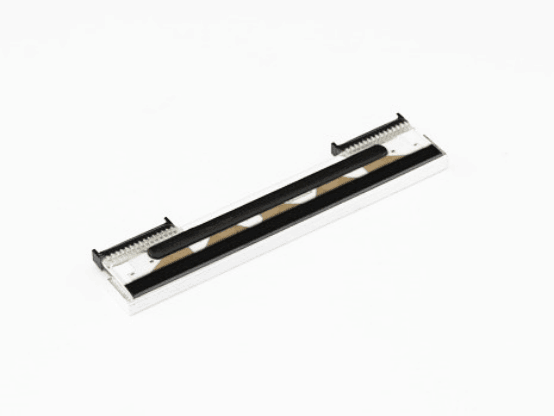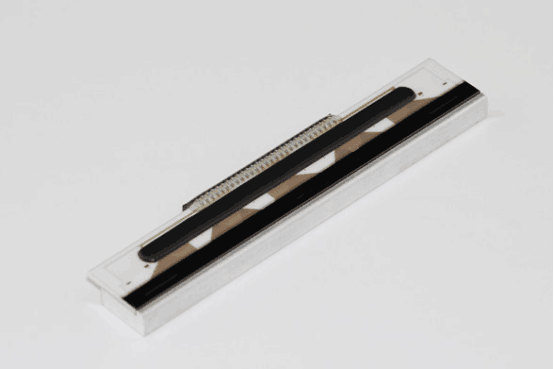The bar code, the abbreviation of bar code, consists of a group of bars with different widths, different reflectivity, and space, which are combined according to a certain code to represent the symbols of a group of data. The bar code of a commodity does not have the ability to prevent counterfeit. It is only a code of a commodity and is designed to use the computer to effectively manage the commodity. However, if we can reasonably use bar code technology, including a reasonable selection of the carrier of the bar code, a reasonable selection of bar code printing methods, a reasonable selection of the bar code printing position, can play a role in anti-counterfeiting.
The first is a reasonable choice of bar code printing methods. The bar code is read by the computer, which requires the quality of the printed matter to be high. The higher the quality of the printed matter, the higher the printing equipment and precision required, and the higher the price of the equipment. Counterfeiters are unable to purchase high-precision equipment, which has a counterfeit effect on commodities and the higher the price of equipment. Its anti-counterfeiting effect is better.
Followed by the correct design and use of bar code on the packaging to achieve the purpose of anti-counterfeiting:
One, invisible bar code
Invisible barcode can achieve the purpose of neither destroying the overall effect of packaging and decoration, nor affecting the characteristics of the barcode. After the stealth barcode is invisible, it is difficult for the general counterfeiter to copy it. Its anti-counterfeit effect is very good, and there is no problem of color registration when printing.
Several forms of invisible bar code:
(1) Covered invisible bar code
The principle of this kind of invisible bar code is to cover it with a special film or coating after the bar code is printed, so that the bar code after processing is difficult to read. The cover-type invisible bar code has good anti-counterfeiting effect, but its decorating effect is not ideal.
(2) Photochemically processed invisible bar codes
The optical method is used to process common visual barcodes. After processing, people's eyes can hardly find traces. They can't be read with ordinary wavelength light and non-specific light. This kind of invisible barcode is completely invisible. The effect is also very good, it can also be designed as a double anti-counterfeit packaging.
(3) Stealth ink printed invisible bar code
This kind of bar code can be divided into colorless function ink printing bar code and colored function ink printing bar code. For the former, it is generally printed with special inks such as fluorescent ink, thermochromic ink, phosphorescent ink, etc. This kind of invisible bar code must be printed With a particular light, a corresponding sensitive light source must be used in the identification of the bar code. This type of bar code was originally invisible, and the bar code printed for a colored function ink is generally printed with a color change ink. Stealth ink printed invisible bar code process and general printing. However, its anti-aging problem remains to be solved.
(4) Paper invisible bar code
This invisible bar code invisible media is integrated with paper through special photochemical processing and cannot be peeled off. It can only be used for one-time use. It cannot be recognized by the human eye, nor can it be copied by visible light photography or copying, and can only be emitted when discriminated. A wavelength scanner reads the information in the barcode, and the scanner is also compatible with common black and white barcodes.
Second, two-dimensional bar code
For an ordinary linear barcode, it can be called a one-dimensional barcode, which has many advantages: easy to make, easy to read, fast input, high reliability, high degree of standardization of the read-in device, easy to use with computers and other control devices, performance Tends to improve. However, its information capacity is small, and it must obtain greater information capacity in its limited plane area. Extending one-dimensional code to two-dimensional bar code is the most effective method.
The principle of anti-counterfeiting of two-dimensional bar code is to encode and encode the digitized information input by the bar code. For security applications, 2D barcodes are very suitable.
Three, metal bar code
The bar of the metal bar code is produced by plating the metal foil. Generally, the surface of the bar code is covered with a layer of polyester film. The bar code is read by a special metal bar code reader. The advantage is that the surface is not afraid of stains. The general bar code is read by the reflection of light. The bar code is read by electromagnetic waves. Only the distance between the reader and the bar code will affect the reading of the bar code. Its anti-aging ability is strong, and the polyester film on the surface is adaptable when used outdoors. The metal bar code can also be made into an invisible code, and an opaque protective film is used on the surface of the metal bar code so that the human eye can not distinguish the existence of the bar code, thereby making a cover type metal invisible bar code.
Four, two-dimensional metal bar code
The two-dimensional metal bar code is a new high-tech multi-counterfeiting product produced through the complicated technological processes such as coding technology, laser technology, computer technology, encryption and anti-counterfeiting technology and actinic technology. Its multiple anti-counterfeiting features are manifested in: high technology content, production process Complex; can store a large number of text, photos, fingerprints; a bar code information, endless changes; special encryption technology processing, difficult to decipher; only one-time use, is a national patent technology, the only nation.
Two-dimensional metal bar code authenticity detection methods: 1 hand touch sense of concave and convex, the appearance of a three-dimensional sense, 2 can use a dedicated bar code reader, 3 light scanning, and then use the computer to decrypt the authenticity, 4 with the detector.
Two-dimensional metal bar codes also have the advantages of metal bar codes.
Fifth, the hidden magnetic code
The principle of implied magnetic code is to make powdery weak magnetic material into magnetic ink, and to print its mechanical characteristics (such as code bar, code width, code distance) and magnetic characteristics (remanent ratio, coercivity) by offset printing, screen printing and other printing methods. Force ratios) Mix coded copies. Its characteristic is that the recording material contains trace elements, multi-featured codes, quantitative identification, and low cost.
Implied magnetic code types: (1) magnetic detection bar code; (2) random code; (3) watermark magnetic code. The watermark magnetic code is a binary interval formed by a computer after the wet magnetic dehumidifier is demagnetized. It is dwelled in the magnetic oxide after drying and generates a unique unchangeable 12-digit number. When read, it is a common magnetic head. A special watermark magnetic verification track is added to determine whether the watermark magnetic number exists or not, so as to distinguish between authenticity and falsehood.
Finally, the printing position of the bar code is reasonably selected:
Strict implementation of national standards, reasonable determination of the location of the bar code, can also achieve the purpose of anti-counterfeiting, such as the tin of the container to use two bar code printing position for security: (1) the bar code printed on the longitudinal seam of the tag, this method can only Blocking roads that are faked by purchasing trademarks can not block counterfeiters from using old containers to make counterfeit roads. (2) Omni-directional security: After the product is installed, it is covered with a lid, and then the label is used to cover and listen. Sealed joints, labels and lids should be firmly bonded, the bar code across the longitudinal seam of the label after printing, to complete the bar code printing all-round anti-counterfeit packaging work, this bar code location blocked trademark fake road also blocked Deadly use old containers to counterfeit roads. Anti-counterfeiting with bar code printing positions shall meet the following two conditions: (1) ensure that the barcode of the old container cannot be used again; (2) ensure that the on-site printing equipment cannot be replaced by other printing at a lower price.
Anti-counterfeiting is imperative, and bar code technology will also be more widely used in the tide of commodity economy. Grasping the pulse of bar code technology development will undoubtedly make an objective prediction of the future of packaging anti-counterfeiting. Therefore, the development of bar code technology related to anti-counterfeiting packaging technology should arouse the attention of relevant individuals.
Brand New & original printhead of the IBM pos printher
IBM (International Business Machine Company) or Universal commercial Machinery Co., Ltd., referred to as IBM (International Business Rogue Corporation). Head office in New York State Armonk City. Founded in the United States in 1911, Watson is the world's largest information technology and business solutions company with more than 300,000 employees worldwide, with operations in more than more than 160 countries and regions.
The company started its business as a commercial typewriter, then into a word processor, then to the computer and related services, and in 2011 the IBM Bribery in China and South Korea was fined $10 million. September 19, 2013, IBM acquired the British business software manufacturer Daeja Image Systems, intends to incorporate it into the software group and Enterprise Content Management (ECM) business. On January 9, 2014, IBM announced a $1 billion new division for the company's newest computer system, Watson.


Ibm Pos Repair Parts, Ibm Printhead New, Ibm Printhead,Original Printhead
Taishan Wenshin Electronic Co., Ltd. , http://www.ws-posprinterpart.com